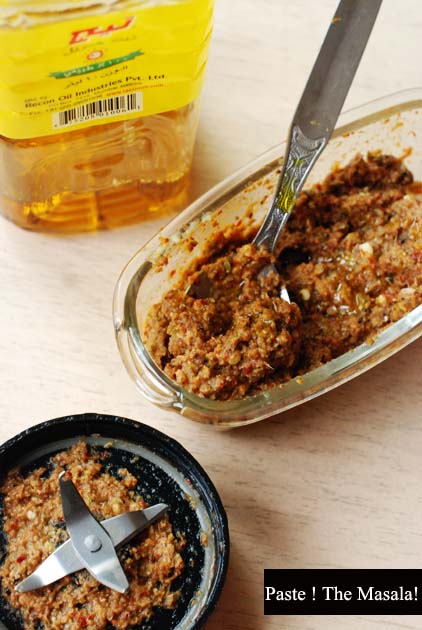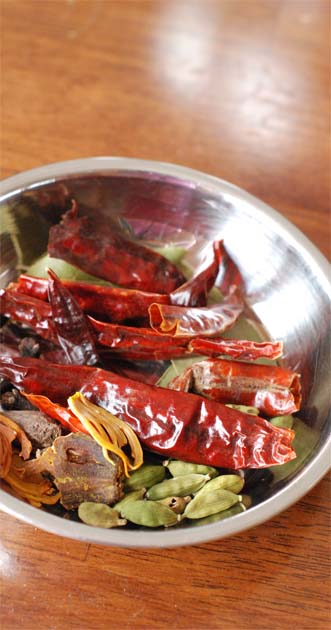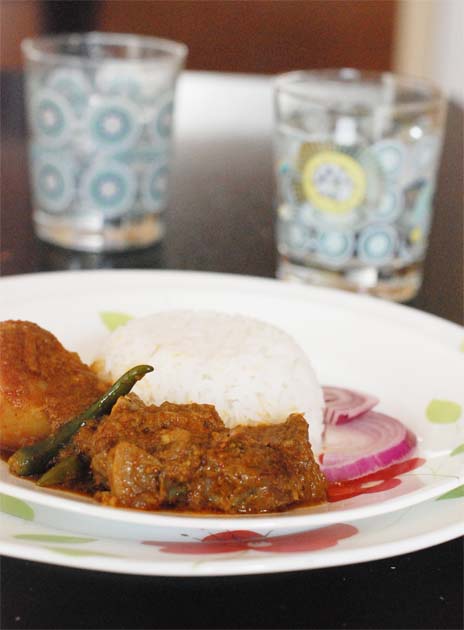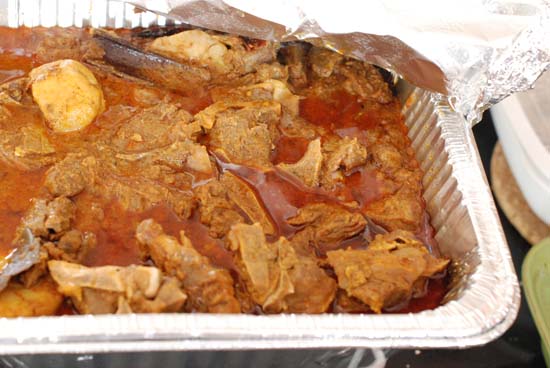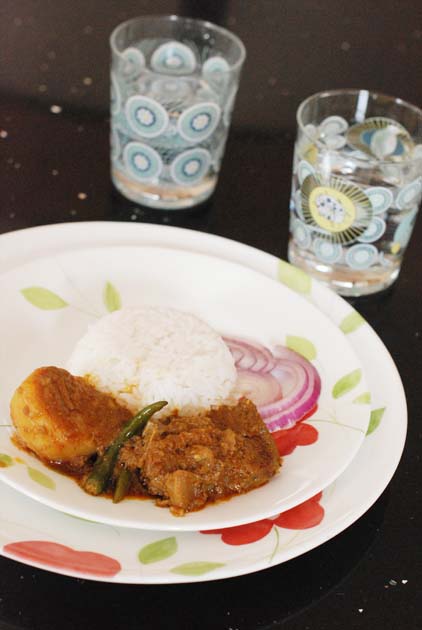Little Sis will soon be five. A big milestone. For her. For me. I had never thought I am the kind of Mother who sheds tears at her children growing up. I always thought "growing older" was a nice thing to happen with children. I can only think of how nice it will be for BigSis to turn twelve and then welcome me home with a cup of tea at the end of the day.
 |
| Red Masoor in a beautiful bowl gifted by a friend and on a coaster gifted by a lovely reader from Australia |
But now that Li'lSis is almost five and will soon be a Kindergartner, I panic. I have not been able to have much time, where there is no one but only her and me. Like the ones I used to have with BigSis because there was no other child and I had quit work for a while.My time with her is usually shared by the elders sis or the Dad.And now with onset of school, I know it will never happen until she graduates college, and both she and me are on unemployment.
This has been a niggling thought at the back of my mind for a while now, and I had wanted to take off for a period, to be with only her before Kindergarten starts but because of various reasons it did not work out. Thankfully my work is such that I do get to spend enough time with her, even if it is not strictly one-on-one. She does not mind at all, this getting me to herself thing, as I think she sees enough of me, but it is my maternal instinct which triggers my pangs. I don't know if Moms with more than one child go through this phase or it is my PMS talking.
Of course the time that I do get with her, I try to multitask with things like...errmm... like drinking tea. So every request of a game from LS is preceded by "Tumi eita cha niye khelte paro" (You can play this with a cup of tea). Her games, mostly made-up, are however very complicated. I often fail to grasp their rules which makes her lose patience.As a result I am always trying to find an excuse to not play those games. It is a circular problem.
 |
| LS doing the cartwheel after umpteen days of trial |
She is also a very independent minded child and one with a quick temper. One of our close frineds has a nickname for her -- NDR -- "Naaker Dogay Raag" (temper at the tip of her nose) and it suits her fine. So one of these days when BS's BFF was having a sleepover at our home, I threw a random question to the kids
"Tell me something that you would like to improve in your personality this summer?", I said.
BS's 10 yr old BFF, M, promptly said that she had a quick temper and she is trying to think happy thoughts every time she gets angry so as to cool her anger.
BS said the it was her personal problem and she did not want to discuss in public.
Inspired by M didi, LS too quipped that she wants to cool her temper by counting to 10 as I had suggested but it was not working, so she would try the happy thought method.
Few days later when I tried to remind LS that she needs to work to reduce her temper, she told me "But how can I think happy thoughts about you, if I am mad at you. You have to stop doing things that make me mad at you".
So now the responsibility has been offloaded to me. She is as smart as they come.
One of the things that most took me by surprise in the recent months was LS's ability to read. She reads almost everything these days from road signs to books. Though BS had started reading as early as 4, I had never thought LS had the patience to do so. Each child is different and since I don't sit with LS to make her read as much as much as I did with BS, I had assumed it would take her longer.
Imagine the surprise when a child who would read 4 letter words at the most was reading Peter Rabbit with words like "garden" and "wanted" with ease and saying aloud "New York & Company" or "Banana Republic" at the stores. It seems magical to me, that something clicked in those tiny brain cells and now she can figure out words without me saying "Chunk" or something like that. These days she peers over my shoulder and reads words from a book I am reading and feels very chuffed about it all. The deal now is we sit with a book and she reads few lines while I do others. She is not yet a "passionate reader" like BS, but she is great at emoting the lines she reads, complete with exclamation and question marks, which makes reading a lot of fun!
Talking about emoting, she has this knack for acting out songs etc. and if in a good mood, the sisters sing and act out songs all the time in the car. And after "Despicable Me 2", creative songs with "bottom" have been featuring more regularly in there.
She will soon be a fabulous five and I will be a Mom with two public school going kids. Sniff. Sniff. Clearly, this is taking me some adjusting and comforting which means a Red Masoor Dal in my book.
Now for the recipe of Musur Dal Seddho which I made with MLLA(My Legume Love Affair) in mind. Now, honestly, I love my legumes too much, so much that I have a whole chapter on Dals in my book and a Dal is had almost every day in my home. So when Susan of The Well Seasoned Cook, decided to giveaway two copies of my book for her the 61st edition of her event MLLA hosted by Aparna of My Diverse Kitchen, I was overjoyed.
Since I could not decide on what to cook for MLLA from Mango Dal, Chholar Dal, Dal er Bora or Musurir Dal, I resorted to the simple Musur Dal Seddho or Boiled Masoor Dal with green chilli and raw mustard oil perfumed with lime leaf, the one that is done without any tadka or "tempering" or "putting life and spice in my Dal" as I say in my book
This is the easiest form of Musurir dal that I do. The last moment what-shall-we-have-for-dinner kind of Dal. Green chilli, raw onion, drizzle of mustard oil and few lime leaves make it exemplary.
With some Rice it is bliss. With some salad and Papad , it is healthy eats.
I am sending this dish to Aparna for MLLA this month, started by Susan and managed now by Lisa.
Recipe updated with option for a variation
Rinse 1&1/2 cups of Red Masoor in running water.
In a sauce pan put the
rinsed lentils
about 4 cups of water
1 tsp of turmeric
2 green chilli finely chopped
salt to taste( go with less salt as you can always adjust later)
In a small variation which turns out fabulous, add thinly sliced onions and chopped tomatoes along with all of the above and then set to boil
Keep the heat at medium and let the dal simmer. The Dal will simmer and froth. So be careful. Because if you are like me and get too engrossed in the kids playing "Just Dance", the dal will spill.
Solution: Use a deep sauce pan. Stir infrequently and keep a long handled wooden ladle immersed in the saucepan.
When the Dal bubbles over, give some stir and you will be good to go. If you want the Dal more soupy, add more water.
In about 25-30 mins, the lentils will be almost cooked.
Now
add couple of lime leaf,
2 more green chilli finely chopped
1 tsp of Mustard Oil
and cook for about 5 more minutes.
Adjust for salt.
If I don't have lime leaf, I also add mint leaf to get a mint flavored Musur Dal.
Garnish with finely chopped raw onion, coriander leaves if you have them and a squeeze of lime juice.








